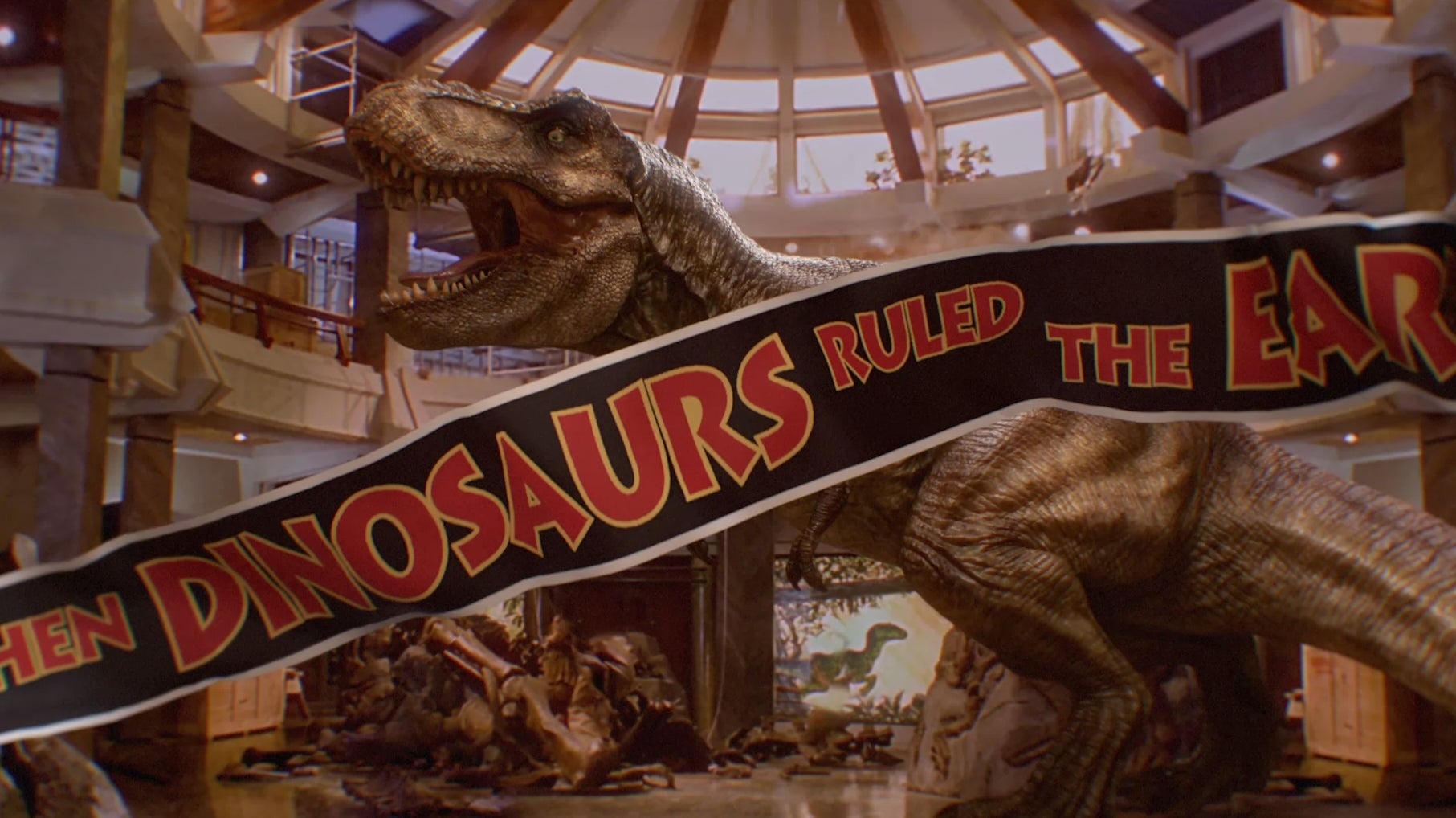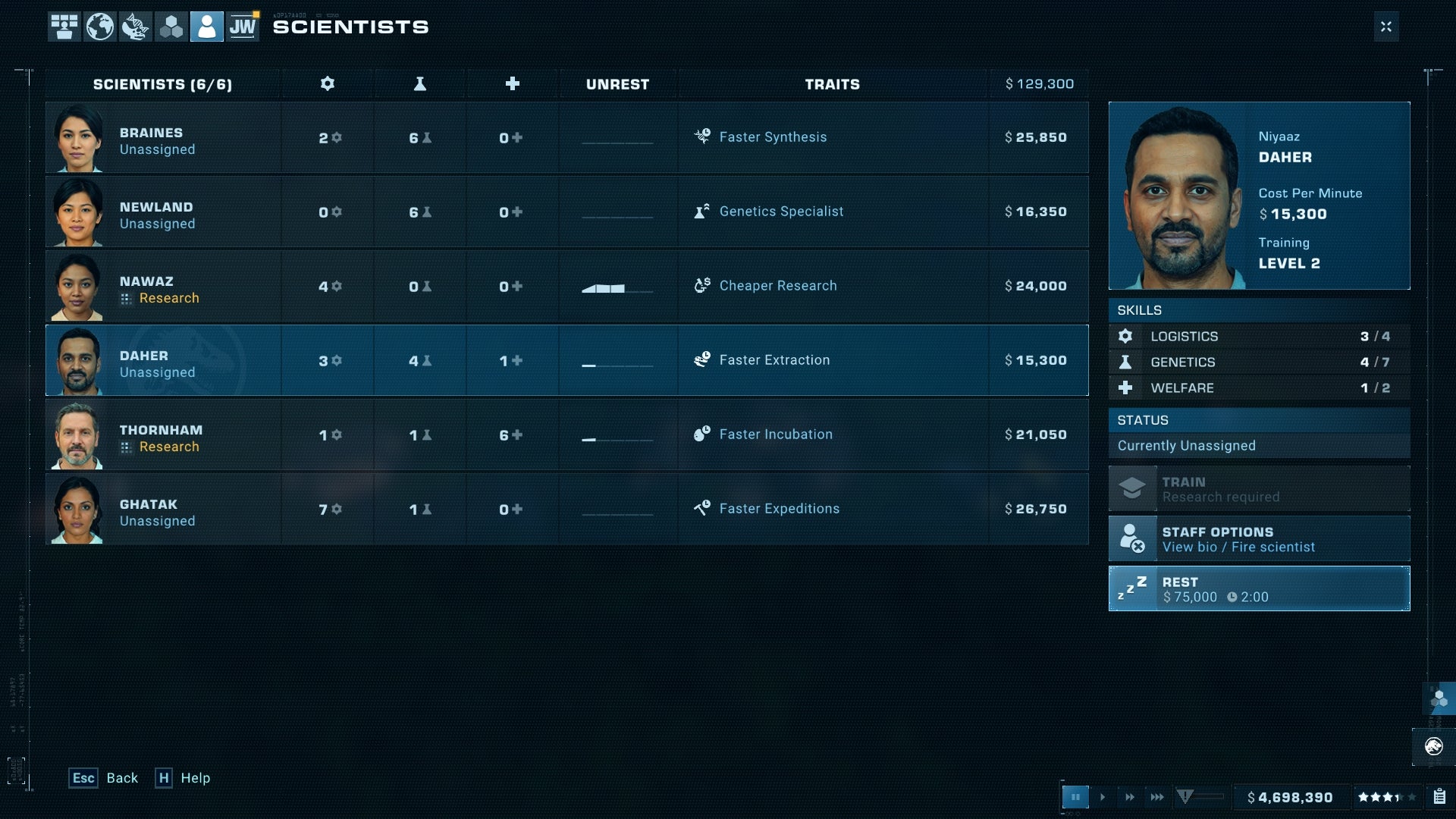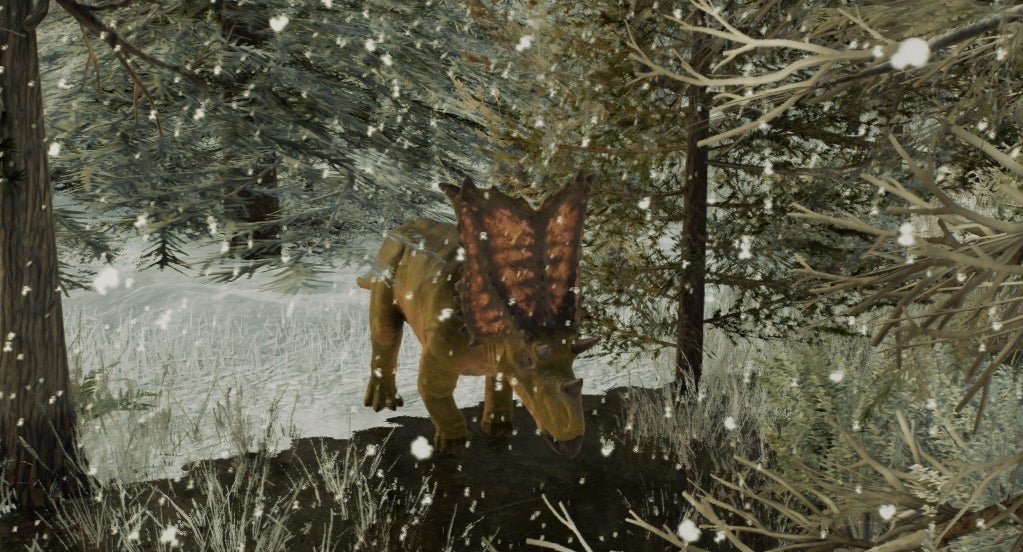Jurassic World Evolution 2 review: a genetically-engineered theme park monster
Jurassic World Development 2 review: a genetically-engineered theme park monster
Open the door, become on the floor, encounter the same frustrating design decisions as before

Jurassic Globe Evolution 2 is, just like its predecessor, a very capable adaptation of picture palace'due south most beloved dinosaur franchise. From its music, to the quotations scattered on its loading screens, to the groovy steaming swamp of Jeff Goldblum voice acting, information technology's a solid case study in how a studio can get its money's worth from an expensive license. And at its heart, of grade, is a stable of spectacular dinosaurs.
Using lessons learned from Planet Zoo's development, which has more than or less filled the time since 2016'south Jurassic Earth Evolution, Frontier have come back with the virtually beautiful, the most real dinosaurs ever to trudge and honk their way across a monitor. It's proper John Hammond, spared-no-expense, sunglasses-off-and-gawp stuff. Which makes it all the more painfully frustrating to realise that they're trapped, again, in a seriously wonky management game.
The start time I wrote that judgement, it said "rubbish management game". Because honestly, having just quit the game in frustration for the sixth session out of six that I've played, that's my gut-deep impression. Only it'due south not a off-white i: in that location are, in fact, some vivid design flourishes in JWE'due south underlying park-architect. It's obvious just how much work has been put into overhauling JWE'southward moving parts, and some of the tweaks are genuinely inspired.
The "territories" mechanic, for example - wherein dinosaurs can determine on the fleck of an enclosure they like, leaving room to coexist with another species that enjoys wildly different terrain - is a clever chip of programming, and does something I've not seen before in the genre. See also the redesign of concession and assiduities placement, which ditches the traditional "plop down a shop at vaguely regular intervals" approach, for something much more cunning involving concentrating and exploiting different customer demographics. It's existent dark marketing shit, perfectly in line with the Jurassic series' noncommittally hostile arroyo to corporate thinking, and I like it.
But for every lilliputian sliver of direction genius spliced into JWE2'due south genes, information technology seems that a rancid great wodge of frog DNA has been slapped on elsewhere. I think information technology'southward worth pointing out that I came to this game as a committed management/building genre nerd. I suspect, yet, that JWE2 is aimed at the slightly broader and less fussy demographic of "people who similar dinosaurs". As such, if you lot're interested in this mainly as a Jurassic game, rather than as a strategy game with dinosaurs, y'all're less probable to find the majesty tarnished by mechanical blueprint. For my beau admin scum, however, here'south a grumblin'.
I get the feeling that a lot of the missteps were well-intentioned attempts to accost criticisms of the first game, for being also strategically simplistic. And in a sense, they've accomplished that. JWE2 is a more circuitous game, in that it presents many more factors which must be attended to in lodge to run a successful park.
"For every little sliver of management genius spliced into JWE2's genes, information technology seems that a rancid great wodge of frog DNA has been slapped on elsewhere."
The catch is that good strategy doesn't jump from the number of interactions yous have with a system yous're in charge of, only from the level of dilemma and brain-gnaw each interaction demands. In Crusader Kings 3, for example, you don't really have to interact with the game at all. It'll do its own bleak medieval thing, and it's upwards to yous to decide where and how to interact, if you want to increase your level of influence on the simulation. Those decisions tend to be really interesting. On the other finish of the scale, look at something similar fire station placement in an old-schoolhouse city builder - nothing interesting happens if you do it, but if you don't do it, your city will be on fire. Information technology'southward a binary mitigation of a fail-state, challenging little except your ability to maintain a to-exercise list.
Jurassic World Evolution 2 is full of this stuff. Ranger stations need to exist periodically push-clicked to refuel their vehicles; scientists need to be button-clicked to residuum, then they don't get Total Nedry. Dinosaurs will of a sudden go the flu, requiring a medical truck to be button-clicked to their location for treatment. None of these things present fulcrums for conclusion; yous're never going to recall "hang on a second, what if I don't give the T-Rex its arse medicine?", or consider the strategic potential of a "no fuel in the jeeps" policy. Y'all only take to stop what you're doing and click a push button, or the game punishes you.
The overall sensation is of trying to consume a hotdog, but having a clown smack it out of your hand every couple of bites, forcing you to pick it upwardly off the floor. I constitute myself constantly jolted out of my focus, then forgetting what I was doing beforehand. And that's a big shame, given how forwards planning, and incremental work towards big projects, are such huge parts of the joy to be found in city/park-builder games.
The other knock-on effect of all this is that, because all of the mandatory click activities incur a financial price of some kind, you lot are instantly gigafucked if you go into fiscal problem. Sure, yous could make the argument that this is a decent model of systemic collapse. Even so, information technology's frustrating when one random disaster sets you off on a lightning-fast failure spiral, taking your park from the edge of whatever milestone you've been ekeing your way towards to total bustitude, in 15 minutes of not-half-equally-entertaining-when-you're-running-the-place carnage.

Parallel to the micromanagement, JWE2 employs a hefty dose of forced value scaling to gate the thespian through what the game sets out every bit the "correct" way to progress through the stages of park construction. Everything from research to dinosaurs is split into tiers, with the cost of acquisition leaping at each bulwark. A supposedly open play environment is funnelled into a linear process of this-then-this-then-this, with a T-King dangled over your head to grind towards.
I mean, there'due south no reason in-setting why a Tyrannosaur would be whatsoever more expensive to make a eg of than a struthiomimus, then why not let players experiment with going big immediately? It's not similar in that location aren't enough of reasons - or potential Ian Malcolm vocalisation lines - to dissuade such hubris, without a load of arbitrary price barriers to force information technology.

I had a wider gripe with progression in the game besides. There are 4 main game modes: a five mission campaign ready after Jurassic World: Fallen Kingdom, which is basically a long tutorial, five supersized "chaos theory" missions in which you lot build parks associated with each of the five movies, five complete-to-unlock claiming missions, and sandbox mode. Allow's cut to it: sandbox is pretty conclusively the most fun... that is, if yous've got a full set of dinosaurs, buildings and the like at your disposal. And needless to say, unlocking all these toys involves grinding through every other fashion offset.
This is not to say that the other game modes are crap. The Anarchy Theory missions, specially, are bully experiences in nostalgia (I peculiarly enjoyed the Lost World one, since information technology tasks yous with building Jurassic Park San Diego, and - in a stroke of brilliance - does dump a T-Rex in your lap, five minutes into the scenario). Merely the thing nigh forced progression through game modes is that, no matter how much fun they might be in themselves, they're chorified into a mountain of over-boiled vegetables, to be shovelled through before you lot're allowed pudding.
JWE2 is profoundly impressive, both visually and in its simulation of big dead birds, in a way that whatsoever corporeality of gameplay footage volition demonstrate far more efficiently than I can in writing. Much like yer man John Hammond, Frontier set out to sell awe and wonder at living dinosaurs - and they've absolutely smashed it on that front end. The truth is, this could be a far worse management game, and nonetheless be worth it just for the joy of deploying photo mode on an established park.

But I guess this is where JWE2 is, unwittingly, an even more than perfect adaption of the Jurassic franchise than Frontier intended information technology to be. Because, at the end of the twenty-four hour period, nobody was knocking Jurassic Park's dinosaurs. They were well good. The park still went tits up, though, because the program for everything besides the actual livestock appeared to have been scrawled down on the back of 1 of Samuel L Jackson's packs of cowboy killers.
And but like fictional company InGen, who opened Jurassic Globe subsequently Jurassic Park went all killy, Borderland have come back with a sequel that - despite a few tweaks and a mosasaur - repeats their get-go effort on a grander calibration. With its fifty-fifty-more-incredible dinosaurs, JWE2 is the Indominus Rex to the T-Rex of its predecessor: a more powerful beast in every respect, but with just as flimsy an infrastructure to support it.
Crucially though, merely as I would ane hundred percent get to a existent-world Jurassic Park despite the nearly-certainty of getting hypermaimed in a portaloo, I will one hundred per centum keep mooning over this game's wonderful dinosaurs, right up to the point where my attention bridge is chewed to bits past micromanagement raptors.
Source: https://www.rockpapershotgun.com/jurassic-world-evolution-2-review
Posted by: bergergaceaddly.blogspot.com


0 Response to "Jurassic World Evolution 2 review: a genetically-engineered theme park monster"
Post a Comment